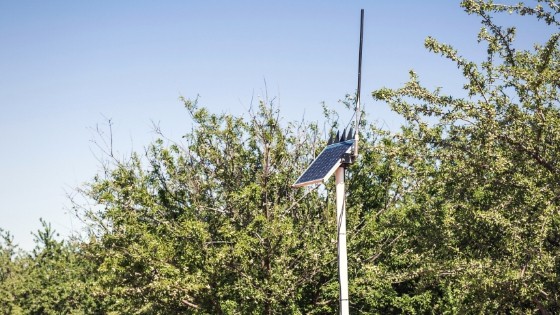
Pulse irrigation in Almonds
The following case study was prepared by Peter Keynes, from Total Eden Renmark. Peter has been working with Sentek probes for many years, and has an excellent understanding of the benefits to growers when soil moisture is managed.
BACKGROUND
- Crop Type: Almonds (Nonpareil)
- Irrigation System: Subsurface Drip 15cm depth (2 x Lines per Tree row approx 75 cm out from the tree row)
- Monitoring System: EnviroSCAN, downloaded using cellular modem
- Location: Riverland, South Australia
- Average Annual Water Use: 15 – 17 ML/Ha
- Peak Daily Water Use: 12.5 – 14mm/day
- Application rate: 1.38mm/day plus fertigation when required
- Soil Type: Deep Sand / Sandy Loams
- Effective Rootzone: 100cm
- Average Rainfall: 265 mm/yr
- Yield (T/Ha): 3.5 – 4.0 t/Ha
In this particular year, the grower who had been using approximately 30 x EnviroSCAN Probes (6 x RT6 Loggers) to schedule their irrigations across the property, suddenly decided to use an Evaporation Pan to assist with irrigation scheduling in late November.
The data from November shows good irrigation, with water spreading laterally to the 60cm probe, and down to about 60 – 80cm deep. The trees were looking very healthy, and the crop potential was very good.
On the 4th and 6th of December, they decided not to irrigate the almonds, as the calculators they were using with their Evap Pans suggested that they had already applied enough water when going off the Industry crop factors and their Evap pan readings.
You can see the result of the non-irrigation on those days. It started a process of losing the lateral spread.
By mid December, they have managed to re-gain the lateral spread, however Summer had well and truly arrived by early January, and they were no longer able to maintain the lateral spread.
In fact, by late December, they were struggling to push water to 60cm on the probe only 20cm from the dripper.
By Mid January, irrigations were wetting laterally to 40cm, to a depth of 40cm. Tree health had declined, and nut size had not reached its full potential.
Harvest takes place in late February, Mid March, and whilst they had applied more water in February as evident by the reaction of the 20cm probe, the 60cm probe does not see water until very late March – April.
The result of this poor irrigation was very costly.
- Not only was yield dramatically affected, Almond trees have a very aggressive root system. When they are stressed during the season, they ‘hunt’ for water. Whilst the drippers were putting out a bit of water, it was not enough, so ultimately the roots went looking for water by entering the drippers.
- Once the roots were in the drippers, the drippers became blocked, and the problem worsens. The drip hose on this property was totally replaced after about 5 – 6 years.
- The data from these 2 x probes does not suggest that the roots had entered the dripper that was being monitored.
- This data set shows that all monitoring tools must be used as a guide. The EnviroSCAN system is a good, reliable system, however soil conditions should be checked using augers to ensure the data is correct.
- The Evap Pan and crop factors were clearly underestimating the water use of the trees, and unfortunately the grower only payed attention to this tool, and neglected to relate it to the EnviroSCAN data.
Below is a video from Sentek’s dealers conference of Peter Keynes talking through this case study.
